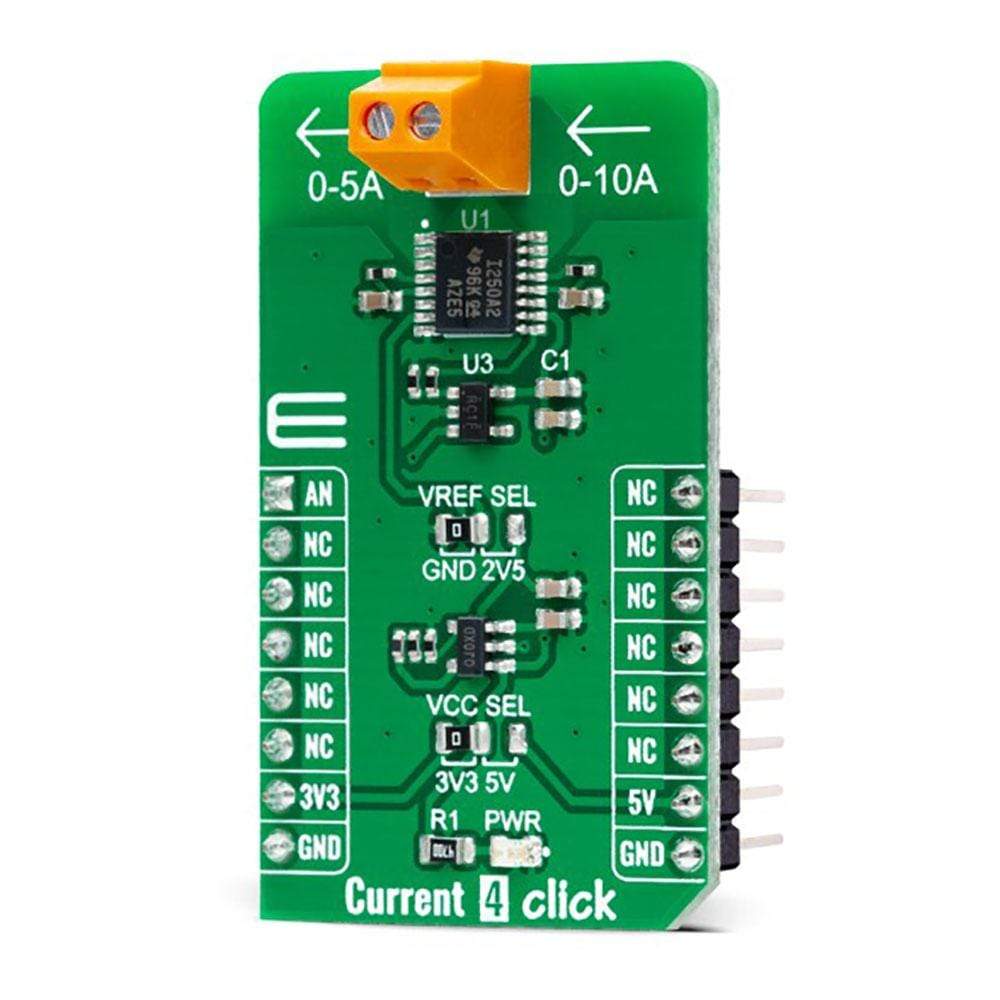
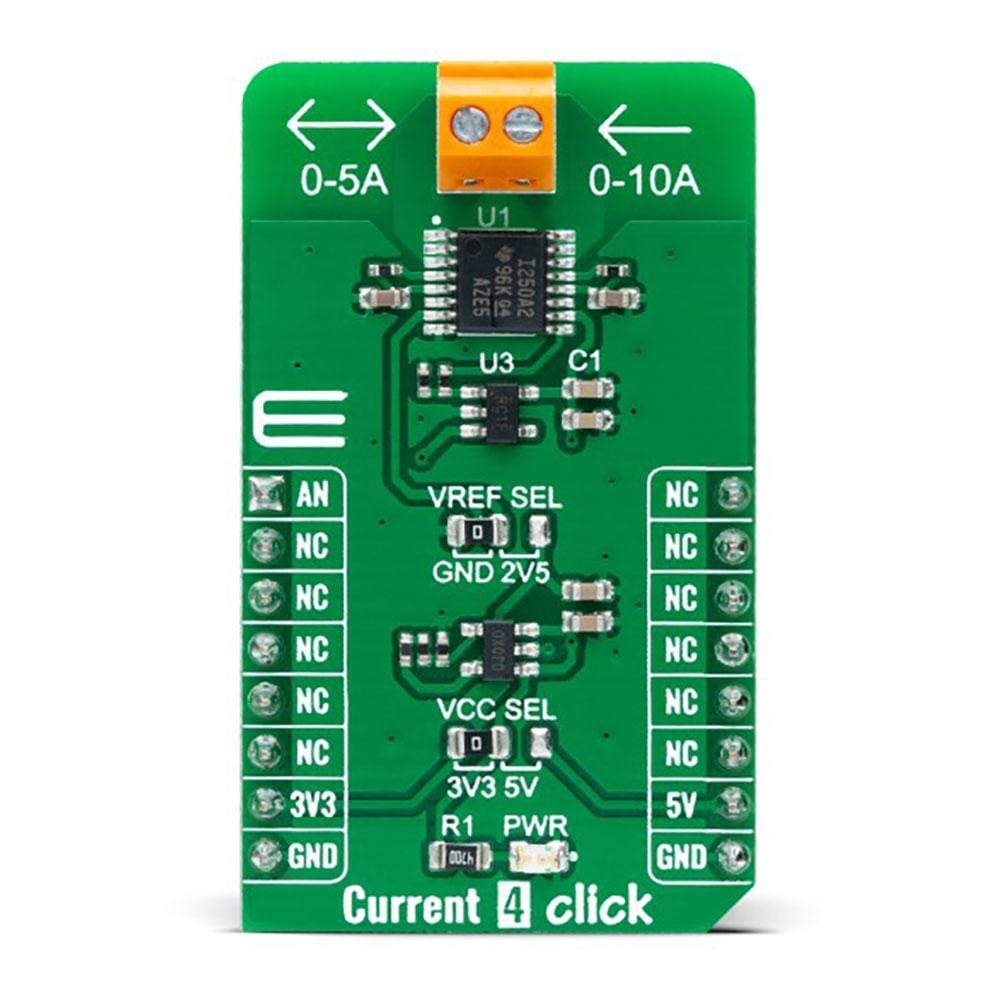
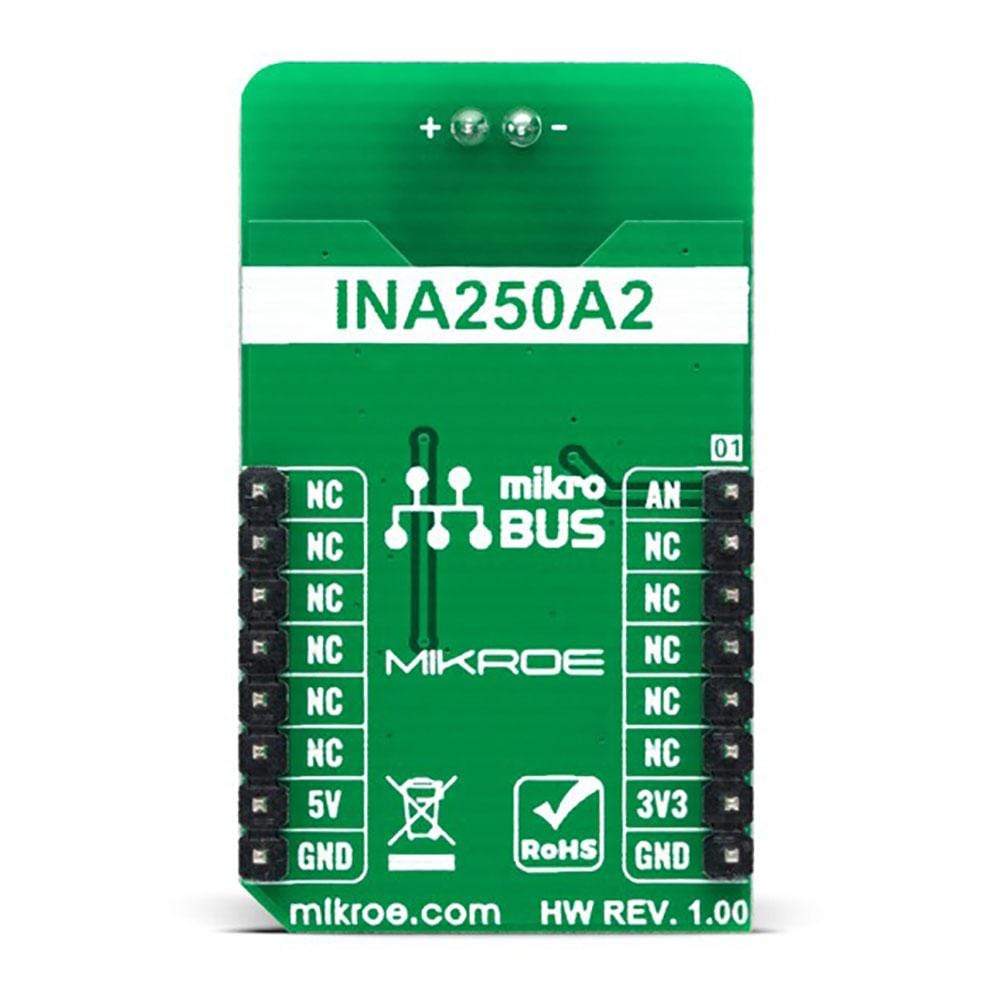
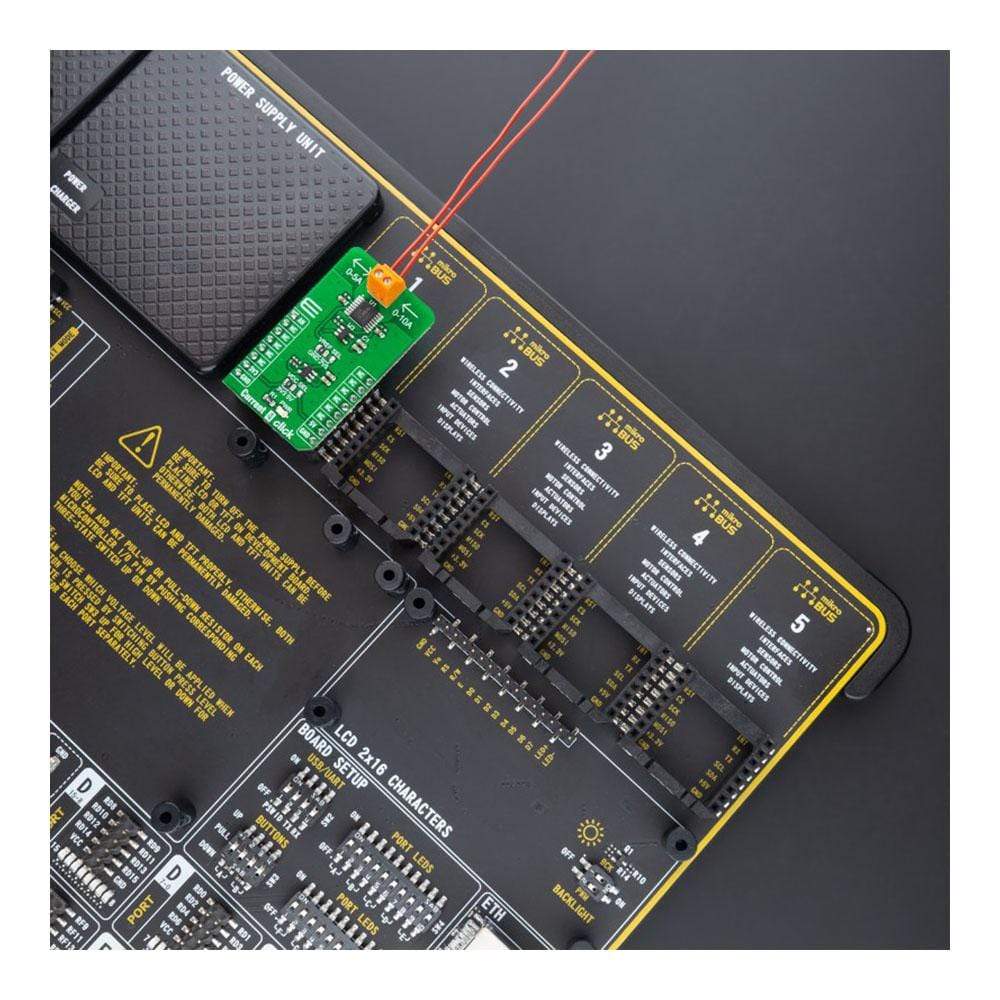
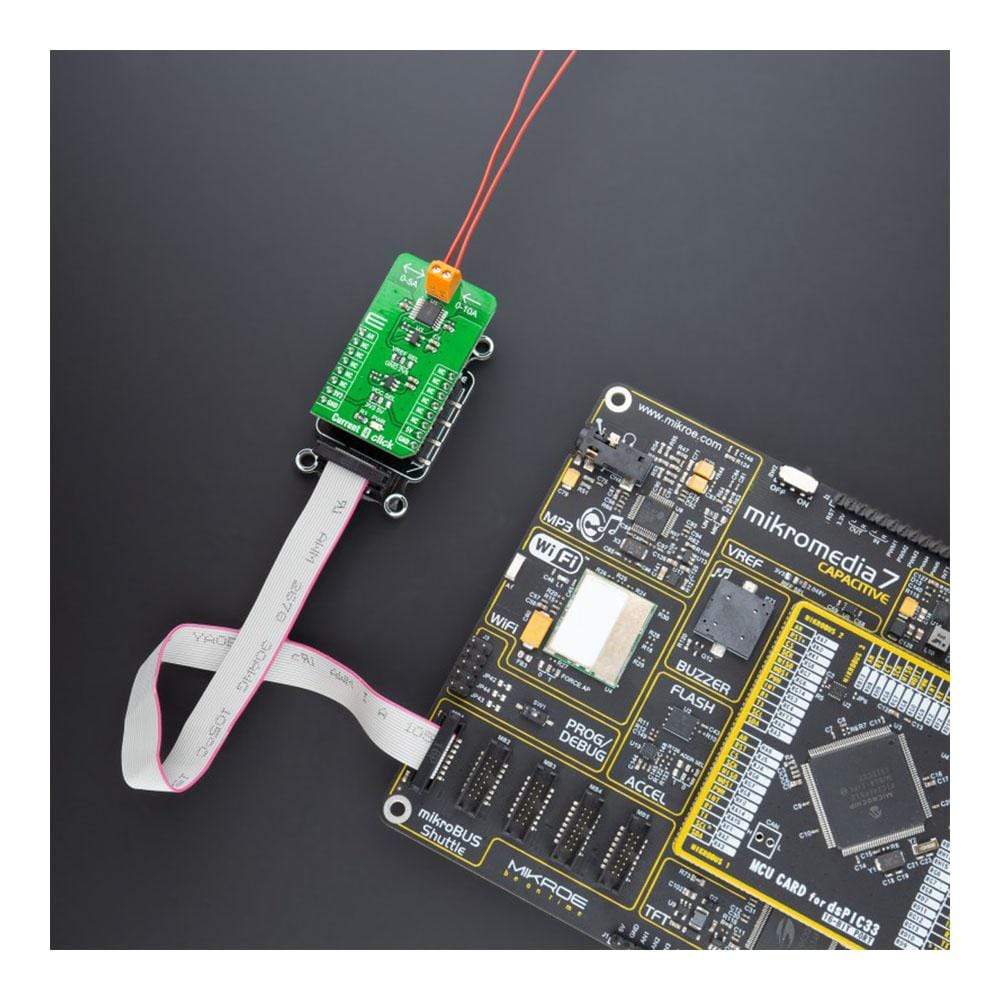
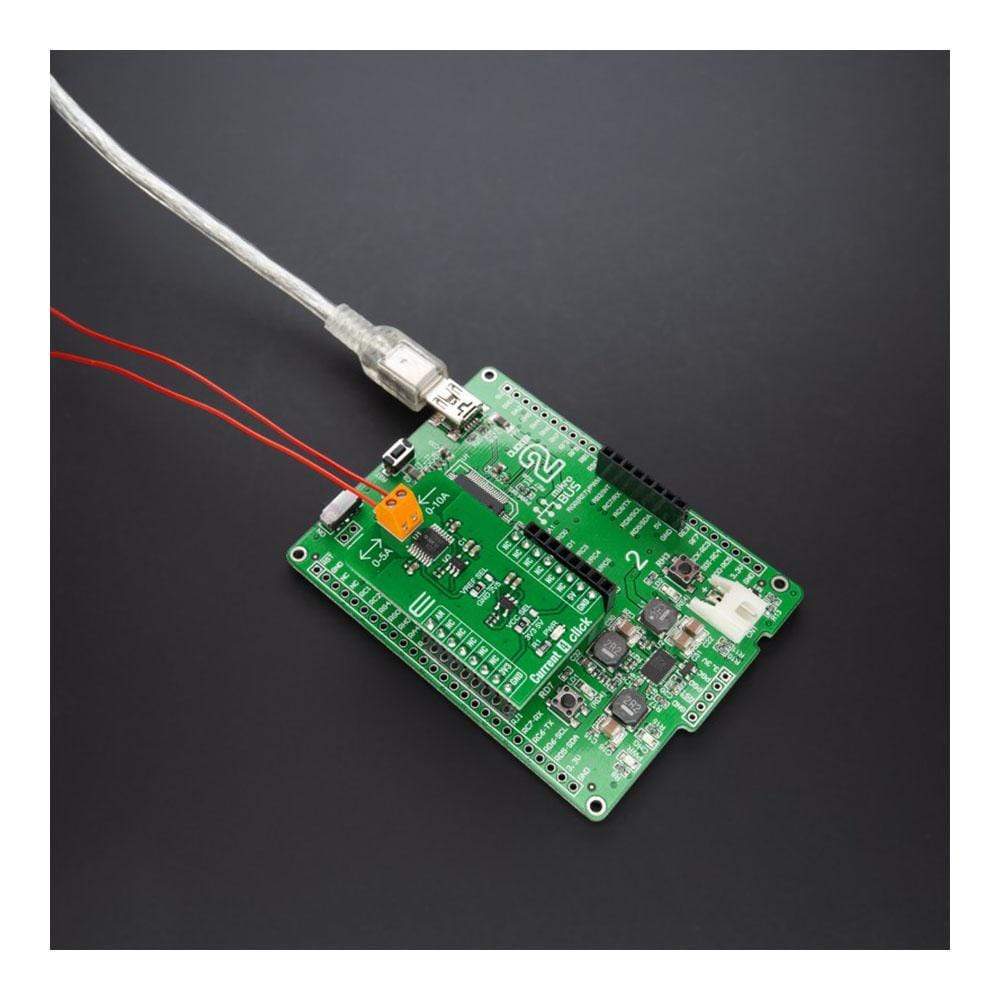
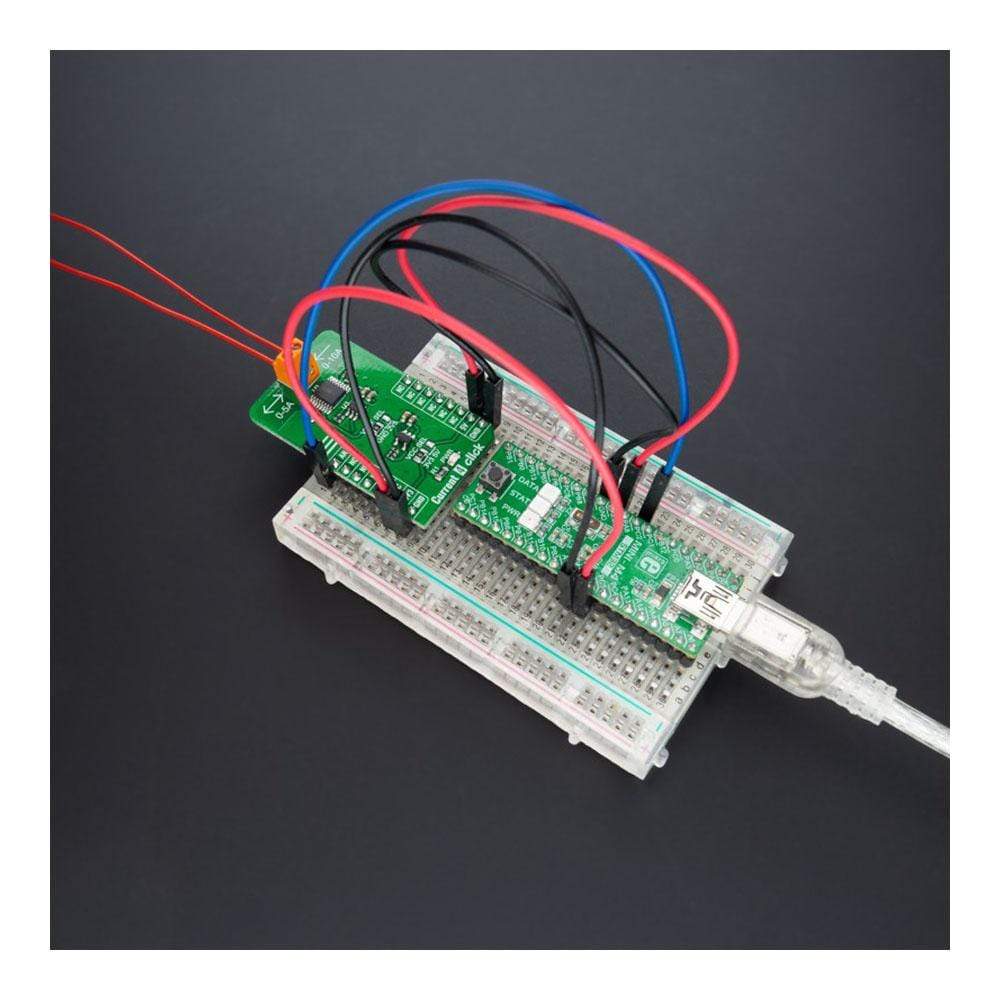
Overview
The Current 4 Click Board™ is a compact add-on board that provides a precise and accurate current sensing solution. This board features the INA250, a bidirectional, zero-drift current-shunt monitor from Texas Instruments. This voltage-output, current-sensing amplifier measures the voltage developed across the internal current-sensing resistor when current passes through it. Also, by selecting the reference voltage, the INA250 allows users to measure both unidirectional and bidirectional currents through the current-sensing resistor. This Click Board™ delivers higher performance to applications such as test and measurement, load monitoring and power supplies, automotive, and many more.
The Current 4 Click Board™ is supported by a mikroSDK compliant library, which includes functions that simplify software development. This Click Board™ comes as a fully tested product, ready to be used on a system equipped with the mikroBUS™ socket.
Downloads
How Does The Current 4 Click Board™ Work?
The Current 4 Click Board™ as its foundation uses the INA250, a current-sense amplifier with a high-precision, low-drift shunt resistor which can deliver highly accurate measurements over a wide temperature range from Texas Instruments. The INA250 measures the voltage developed across the internal current-sensing resistor when current passes through it. The integrated 2mΩ shunt resistor offers 0.1% tolerance and a low drift of 15pmm/°C, enabling the higher performance of the end equipment. This amplifier allows for high-accuracy current measurements at common-mode voltages and offers a maximum error of 0.84% over the temperature range from -40 to +125°C.
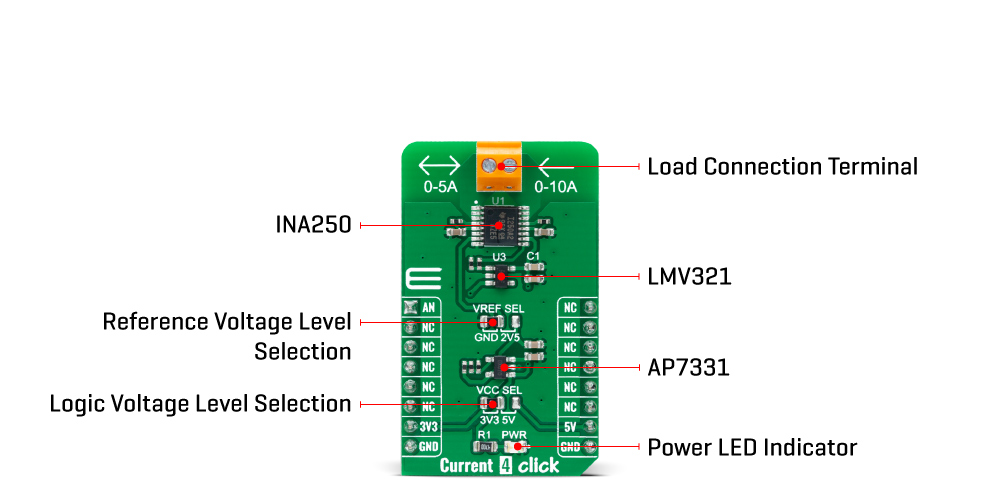
The Current 4 Click Board™ communicates with MCU using only one pin routed on the AN pin of the mikroBUS™ socket. The output analogue signal from INA250 is forwarded to the input of the operational amplifier, the LMV321 low-voltage rail-to-rail OpAmp from Texas Instruments, which represents the most cost-effective solution for applications where low voltage operation is needed. The output of the LMV321 OpAmp has a stable unity-gain, acting as a buffer so that the host MCU can sample the output voltage of the INA250 via the AN pin of the mikroBUS™ socket.
The INA250 can be configured to measure both unidirectional and bidirectional currents through the reference voltage level. For unidirectional operation, the reference pin should be tied to the ground. When the current increases, the output signal also increases upwards from this reference voltage (or ground in this case). For bidirectional currents, an external voltage source can be used as the reference voltage, in this case, a low dropout linear regulator AP7331 from Diodes Incorporated to provide the 2.5V reference supply voltage for the INA250. The reference voltage level can be selected by positioning the SMD jumper labelled VREF SEL to an appropriate position choosing between 2.5V provided by AP7331 or GND.
The Current 4 Click Board™ can operate with both 3.3V and 5V logic voltage levels selected via the VCC SEL jumper. This way, it allows both 3.3V and 5V capable MCUs to use the communication lines properly. However, the Click board™ comes equipped with a library containing easy-to-use functions and an example code that can be used, as a reference, for further development.
Specifications
| Type | Measurements |
| Applications | Can be used for applications such as test and measurement, load monitoring and power supplies, automotive, and many more |
| On-board modules | INA250 - current-sense amplifier with a high-precision, low-drift shunt resistor which can deliver highly accurate measurements over a wide temperature range from Texas Instruments |
| Key Features | Low power consumption, a precise integrated shunt resistor, high accuracy, 500mV/A gain, zero-drift, uni/bidirectional current measurements, and more |
| Interface | Analog |
| Compatibility | mikroBUS |
| Click board size | M (42.9 x 25.4 mm) |
| Input Voltage | 3.3V or 5V |
Pinout diagram
This table shows how the pinout on Current 4 Click corresponds to the pinout on the mikroBUS™ socket (the latter shown in the two middle columns).
| Notes | Pin |  |
Pin | Notes | |||
|---|---|---|---|---|---|---|---|
| Analog Signal | AN | 1 | AN | PWM | 16 | NC | |
| NC | 2 | RST | INT | 15 | NC | ||
| NC | 3 | CS | RX | 14 | NC | ||
| NC | 4 | SCK | TX | 13 | NC | ||
| NC | 5 | MISO | SCL | 12 | NC | ||
| NC | 6 | MOSI | SDA | 11 | NC | ||
| Power Supply | 3.3V | 7 | 3.3V | 5V | 10 | 5V | Power Supply |
| Ground | GND | 8 | GND | GND | 9 | GND | Ground |
Onboard settings and indicators
| Label | Name | Default | Description |
|---|---|---|---|
| LD1 | PWR | - | Power LED Indicator |
| JP1 | VCC SEL | Left | Logic Level Voltage Selection 3V3/5V: Left position 3V3, Right position 5V |
| JP2 | VREL SEL | Left | Reference Voltage Level Selection GND/2V5: Left position GND, Right position 2V5 |
Current 4 Click electrical specifications
| Description | Min | Typ | Max | Unit |
|---|---|---|---|---|
| Supply Voltage | 3.3 | - | 5 | V |
| Analog Input Current | - | - | ±15 | A |
| Shunt Resistance | - | 2 | - | mΩ |
| Gain | - | 500 | - | mV/A |
| Operating Temperature Range | -40 | +25 | +125 | °C |
| General Information | |
|---|---|
Part Number (SKU) |
MIKROE-4755
|
Manufacturer |
|
| Physical and Mechanical | |
Weight |
0.02 kg
|
| Other | |
Country of Origin |
|
HS Code Customs Tariff code
|
|
EAN |
8606027383458
|
Warranty |
|
Frequently Asked Questions
Have a Question?
Be the first to ask a question about this.







